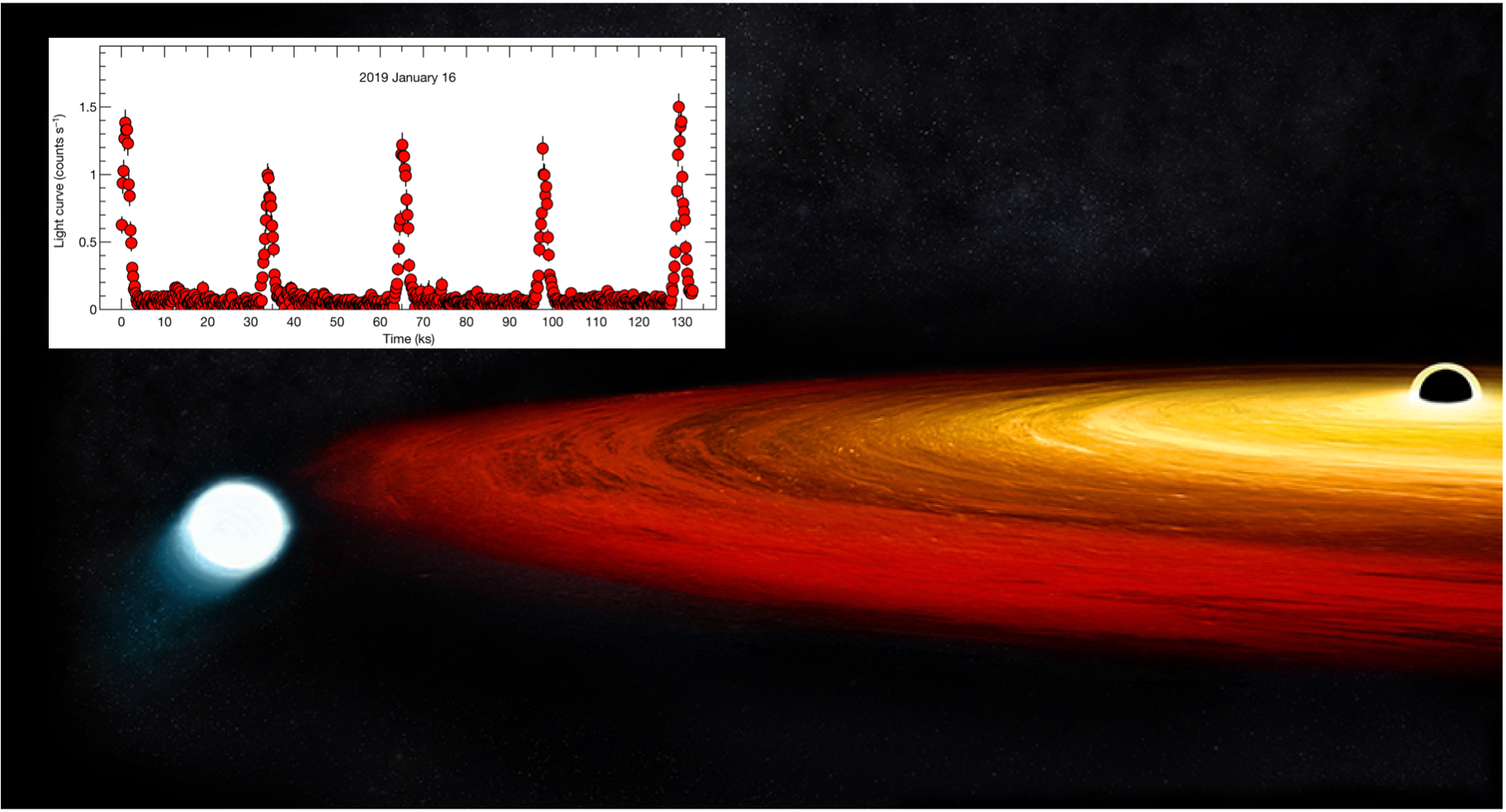
 Credit: X-ray: NASA/CXO/CSIC-INTA/G.Miniutti et al. (2019, Nature, Volume 573, p.381); Illustration: NASA/CXC/M. Weiss
Credit: X-ray: NASA/CXO/CSIC-INTA/G.Miniutti et al. (2019, Nature, Volume 573, p.381); Illustration: NASA/CXC/M. Weiss
Survival?
In 2018, astronomers noticed a strange thing: an apparently regular brightening of the X-ray emission from a supermassive black hole in a rather obscure galaxy called GSN 069. First noticed by the XMM-Newton X-ray observatory, the galaxy showed short, high-amplitude peaks of X-rays every 9 hours. Followup observations by XMM-Newton and by the Chandra X-ray Observatory confirmed these regular X-ray variations. An example of these variations are shown in the inset image above, which shows the X-ray brightness versus time of GSN069 from early 2019, as seen by XMM-Newton. Such short, sharp variations from a galaxy are highly unusual and a cosmic puzzle to researchers. An audacious interpretation of these strange pulsations may have unravelled the mystery. These regular X-ray peaks may arise from a weird type of tidal disruption event, in which an unfortunate star wanders too close to a supermassive black hole and gradually gets torn apart. But other observed disruption events produce irregular X-ray spikes in brightness as the star gets swallowed by the black hole, not the regular, periodic spikes in X-rays like those seen from GSN 069. Astronomers think these regular spikes are produced by a poor, low mass white dwarf star in a 9 hour, highly elliptical orbit around the supermassive black hole at the center of GSN 069. This situation is
illustrated above,
which pictures the white dwarf at its maximum distance just beyond the disk of accreted matter around the black hole. Because the orbit is so elliptical, the distance between the star and the black hole varies by about a factor of ten, and when the star and the black hole are close, the enormous gravitational pull of the black hole strips material from the white dwarf for a short interval of time, until the white dwarf moves far enough away from the black hole and the accretion stops. Though this situation seems dire, there may be hope for this little white dwarf. Detailed analysis of the white dwarf's orbit suggests that the white dwarf should gradually move away from the black hole to a safe distance, (hopefully) ensuring its survival.
Published: May 11, 2020
<
HEA Dictionary ● Archive
● Search HEAPOW
● Other Languages
● HEAPOW on Facebook
● Download all Images
● Education ● HEAD
>

Each week the HEASARC
brings you new, exciting and beautiful images from X-ray and Gamma ray
astronomy. Check back each week and be sure to check out the HEAPOW archive!
Last modified Tuesday, 27-Feb-2024 10:10:07 EST


